{Rouen, France}
The sound of accordion music fills the air as I turn out of the alley and walk toward the Great Clock of Rouen. It seems a street musician has claimed his spot in the cathedral square particularly early on this Sunday morning, and his songs have been floating through the empty streets, following me like an old-school French soundtrack as I walk past the half-timbered buildings of the old town. The street that I’m walking on is named for the clock - the Rue du Gros Horloge - and standing underneath the sculptured arch of the Renaissance bell tower, I can see Rouen Cathedral all the way down at one end of the block. It is this cathedral - lacy white and delicate, and looking for all of the world like a tiered Victorian wedding cake - that Claude Monet painted over and over and over and over again at the end of the 19th century. He painted the cathedral in every light imaginable, over fifty times in total, quite often from the same spot - not far from where the accordionist is playing this morning. To be honest, I’m not 100% sure his paintings do the cathedral justice (sorry, Claude, it doesn’t mean I don’t think you’re a genius!)…what is crisp and white and in real life tends to appear slightly muddy in the hands of the Impressionist.
I have been in Rouen once before - for just a couple of hours on a high school trip to France. The clock was the one thing I remembered from that visit: it’s golden sunburst dial and the instruments that track the phases of the moon and the days of the week. This clock only has one hand - an hour hand with a sheep at the point. Built in 1389, it is the oldest clock in France, and one of the oldest in the world. When it was constructed, no one really expected to know time down to the minute or second…if you had an idea of what hour of the day it was, well, that was close enough.
If I look the opposite way down the Rue du Gros Horloge I can just catch a glimpse of the Vieux Marché - the old market, where almost six hundred years ago the 19-year-old Joan of Arc was burned at the stake for heresy.
It is somehow surprising that I didn’t remember Rouen’s connection with Joan of Arc from my first trip, because she is everywhere here. She pops up all over town: there is a room in the Musée des Beaux Arts filled with artwork inspired by her, and an interactive “Joan of Arc Experience” in an old church near the cathedral. The tower where she was held prisoner while she was on trial is just around the corner from my hotel, the only surviving bit of a much larger castle complex. The tower - called “the dungeon of Rouen” - is, ironically, an escape room these days.
Joan of Arc (Jeanne d’Arc, in French) started having visions of leading the French army in their effort to reclaim the English-occupied north of France in the Hundred Years War when she was only ten years old. By the age of seventeen, she was granted an audience with the Dauphin Charles, who had been prevented from being crowned King of France while the city of Reims - in whose cathedral the ceremony crowning the French king had traditionally been held - was under English rule. Charles hid himself among his courtiers - but upon arrival, Joan immediately recognized him, and told him something…something that convinced him to allow Joan to lead the French troops at the Battle of Orleans.
What exactly she said is, of course, lost to history…but off to Orleans she went, where she led the French army to victory in a series of battles. Just a few months later, though, she was taken prisoner, and transferred to Rouen to stand trial for - among other things - witchcraft, heresy, and theft. While in prison, she dressed like a soldier, and wrapped cords tightly around her body to protect herself from sexual assault. She was finally convicted of heresy - for dressing like a man while in prison - and was burned at the stake at the age of 19.
Joan was cleared of her crimes less than twenty years later, and in the 1920s she was officially canonized by the Catholic church. Saint Joan is now one of the patron saints of France.
There is a beautiful church dedicated to Joan’s memory in the Vieux Marché, and a small plaque that marks the exact spot where she was burned.
I expect there to be quite a few visitors at Joan’s memorial, and at first glance there are a lot of people milling about. But none of them are looking at Joan’s plaque, or at her church. They are all turned 90 degrees to the right, looking intently at a row of restaurants along one side of the square. Actually, they are lookin at one restaurant in particular: La Couronne. Founded in 1345 - before the Gros Horloge was built, and before Joan met her end in the square nearby - La Couronne is the oldest inn and continuously-operating restaurant in France.
Impressive as that is, it is not why the crowds are gathered. Everyone is here because it is also the restaurant where, in 1948, Julia Child - fresh off the boat from America - ate her first meal in France.
It was after her meal at this restaurant that Julia Child decided to devote her life to first mastering and then teaching the art of French cooking.
Julia writes lovingly of La Couronne and the meal she shared with her husband Paul in her autobiographical book My Life in France…and the restaurant offers a fixed-price menu that exactly replicates the five courses:
Oysters on the Half Shell
Sole Meuniere
Salad Verte
Fromage Blanc with Fruit
Coffee with Petit-Fours
It is sixty-eight euros a person (without wine), so a bit rich for my blood, particularly since I am allergic to shellfish.
Anyway, even though it is still May it has been blisteringly hot here in the northwest of France. It is almost too hot to eat…but not quite, thank goodness. Rouen is nothing if not foodie heaven. The streets surrounding the Vieux Marché are filled with boulangeries, epiceries, patisseries, fromageries, boucheries and charcuteries galore.
My favorite patisserie is called Emma and it is right around the corner from the hotel. They make delicious cakes salés, one of those uniquely French things that I don’t really think we have an equivalent of in the U.S. It’s a savoury cake - mostly a quick bread, I guess, but generally studded with ham, cheese, nuts and herbs.
(At first I think Emma is named for Emma Bovary. Gustave Flaubert was born in Rouen and part of Madame Bovary is set here - Emma Bovary famously meets her lover Léon for a secret tryst at Rouen Cathedral…but it turns out Emma is just the bakery owner’s nickname.)
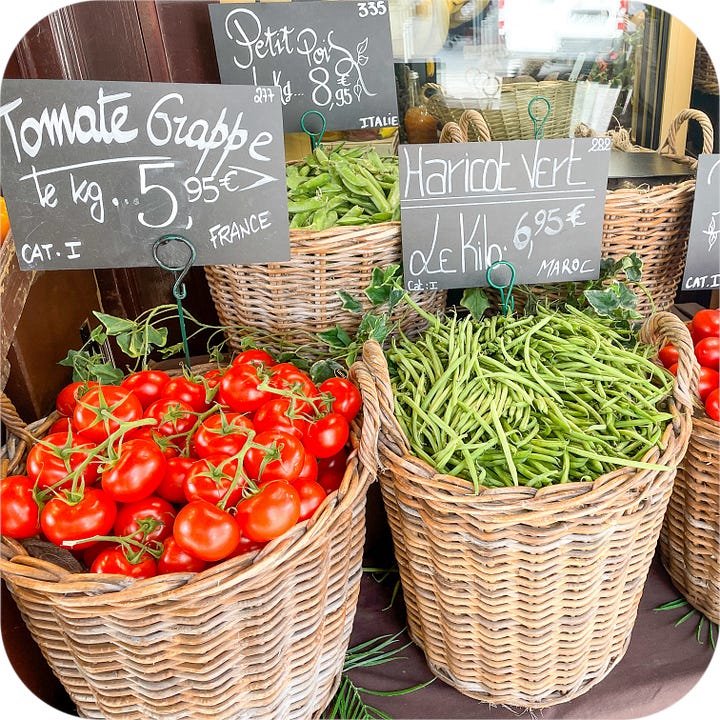
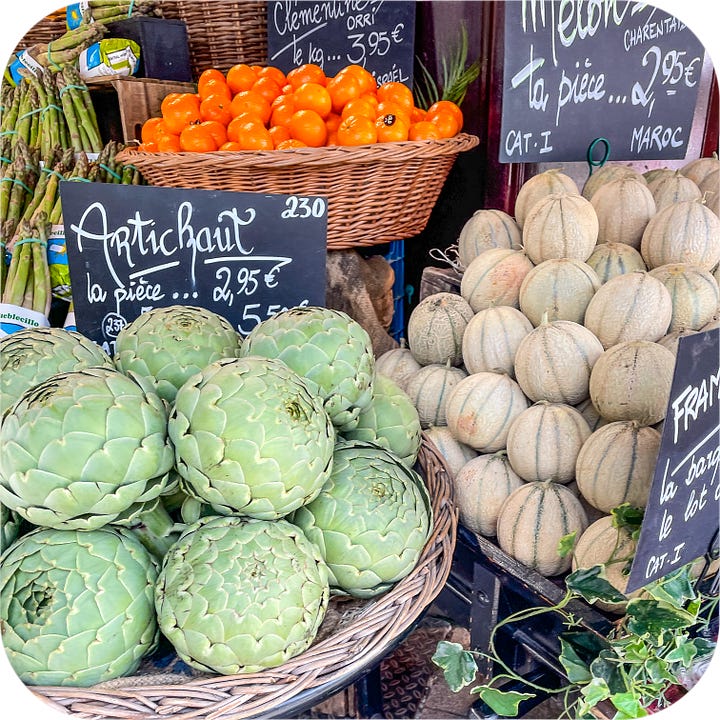
I do pretty well with my French, but continue to read the menu wrong every once in a while. One afternoon, when the sun is particularly hot, I decide that the only thing I can manage on the menu is the charcuterie plate that they have listed. A few slices of cheese and some thinly sliced sausage sounds perfect…but when I place my order, the waitress gives me a quizzical “Are you sure?” look. Oui, I say confidently, I’m sure…it’s much too hot to eat more than that.
It’s surprising how easy it is to mix up simple words like charcuterie and choucroute when you’re feeling over-confident about your foreign language skills.
Needless to say, I was the only person who ordered Alsatian choucroute - a huge steaming platter of sauerkraut, boiled potatoes, sausages and a pork knuckle that particular afternoon. I finished it off, though - while dainty French ladies ate leafy salads and drank mineral water all around me.
It was delicious.
I don’t mind being the crazy American lady once in a while.
I love Rouen, but it’s lovely to get out to the coast, too…to the small fishing village of Honfleur, with its old port, and its throngs of tourists…to breathtaking Étretat…and to Mont Saint-Michel, the small town built upon an island just off the coast of Normandy - or Brittany, depending on who you ask. A site of pilgrimage for centuries, the island has a stunning Medieval abbey at the very top - first built by Saint Aubert of Avranches, who in the 9th century had a vision (visions are kind of a thing in France…see: Joan of Arc, Saint-Bénézet, Lourdes..), in which the archangel Michael came to him and instructed him to build an abbey on the rocky island.
In old days, the abbey was only reachable when the tide was out - now there is a land bridge that connects it to the mainland.
I was eighteen years old the last time I was at Mont Saint-Michel, and the climb to the top was decidedly easier then. Then again, it is still unusually hot - so hot that several visitors are being treated for heat exhaustion by medics near the entrance of the Abbey.
There is a main street that winds up and down the island, which is usually very crowded and is lined with cafes and touristy shops. If you asked me what I remembered about Mont Saint-Michel from my first visit here (besides the climb), my answer would be: I remember this street, and the crowds, and I remember them cooking something in a storefront, and everyone stopping to watch. I don’t remember what they were cooking exactly, but I remember it was a specialty, something you weren’t supposed to be able to get anywhere else.
Omelettes, it turns out. They were cooking omelettes. Specifically les omelettes de la Mère Poulard. The most famous omelettes in France, so it seems - so famous that superstition says that if a French presidential candidate visits the island and does not consume Mère Poulard’s omelette, he will lose the election.
Mère Poulard was Annette Poulard (1851-1931), who owned an inn at the base of Mont-Saint-Michel. Mère - which means mother in French - was in this case used in an honorary sense: Mère was the title given to particularly talented female chefs in the 19th-century in France. Her omelette is close to a soufflé - each one is beaten for a full five minutes before baking over an open fire. They are certainly a sight to behold - fluffy and golden - and it is fun to marvel at the arm strength required by the cooks…but at close to forty euros each, a splurge. And since I certainly have no plans to run for President of France anytime soon, I thought it was ok to pass.
Mère Poulard’s other specialty, though, was cookies. Sablés Bretonnes, specifically - Breton butter cookies - and they sell them by the tin-full at Mont-Saint-Michel, in a variety of flavors. They are a buttery delight, and each one is stamped with “1888” the year that Mère Poulard opened her inn.
Dairy is kind of a big deal in Normandy…butter, cream, cheese. In fact, along with the apple beverages cider and Calvados, cream and the local Camembert cheese make up the famous “Four C’s” of Norman cuisine. (You’ll notice that choucroute is definitely not on that list.)
Back in Rouen, one of the towers at Rouen Cathedral is nicknamed La Tour de Beurre - the Butter Tower. La Tour de Beurre dates to the 15th century, during which time Catholics were forbidden to eat cream or butter during Lent. However, funding was needed to finance the completion of the Cathedral’s tower, and so the Pope authorized the selling of indulgences to allow local Catholics to eat butter during Lent. Thankfully, the Normans were pretty fond of their dairy even then, and the tower was financed and finished in no time.
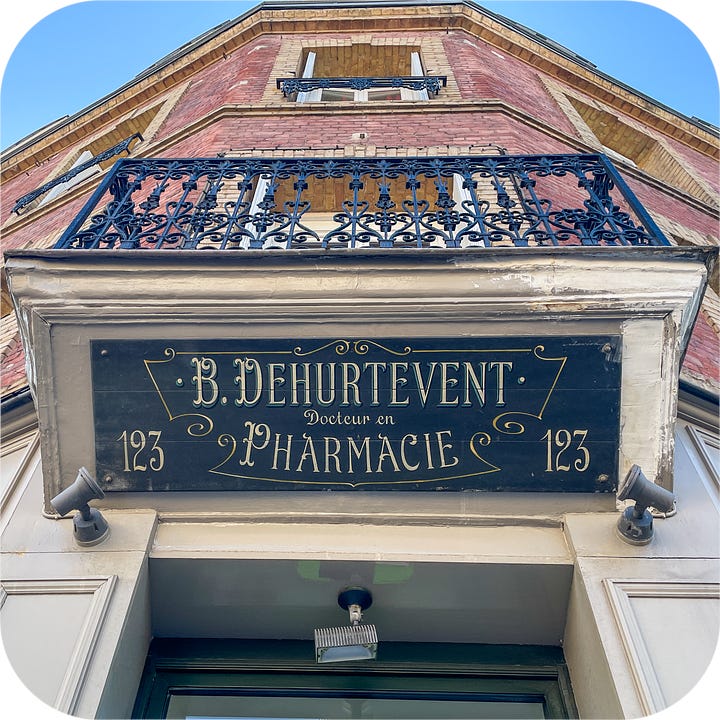
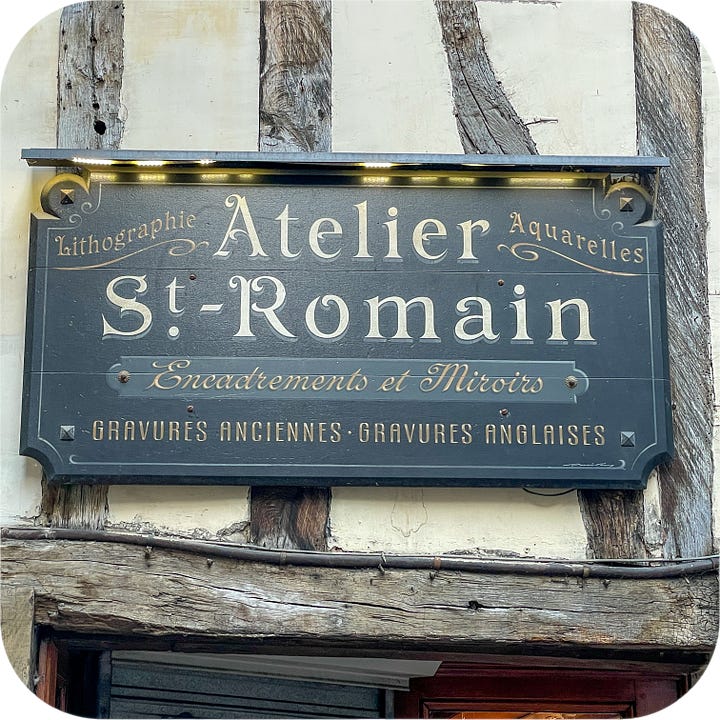
I think it is the half-timbered buildings that I will remember most about this city. They are everywhere, over 2,000 in total. Their profusion reminds me that, eight hundred years ago, Rouen was the biggest city in France. And when the cathedral was built, it was the largest building in the entire world.
This corner of France is much quieter now. Things change.
“Everything changes, even stone…” Claude Monet wrote, when asked why he painted Rouen Cathedral so many times.
Things change, but they also stay the same. The Cathedral, the Vieux-Marché, the Gros Horloge - they haven’t changed that much in six hundred years. You can still buy some of the world’s best cream and cheese and cider and Calvados right here.
There is a monument to Claude Monet in my favorite little square in Rouen. And as I sit in the little café, surrounded by sunshine and half-timbered houses, and drink a crisp cider and spread the most delicious butter on my bread, I think to myself that even the great Monet is not always right. Some of the best things in life never change after all, do they?
XO
PS - If you enjoyed this letter, please consider becoming a subscriber to have Beautiful Things delivered to your inbox. Subscriptions are free, unless you choose otherwise. Absolutely no pressure at all, but if you’d like to support my writing, I’ve added a virtual tip jar as well: you can find the “Buy me a coffee” button below. Thank you for reading!




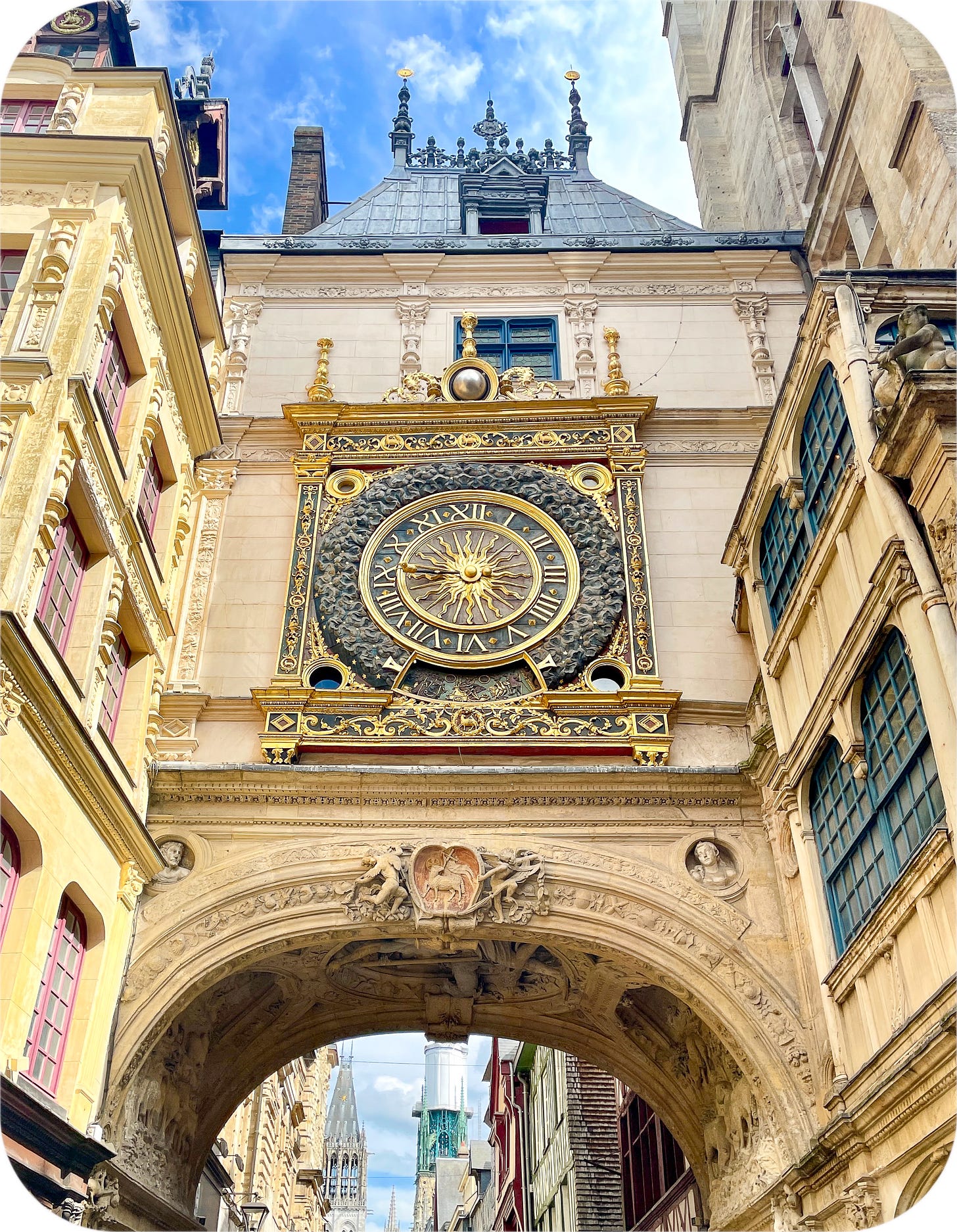




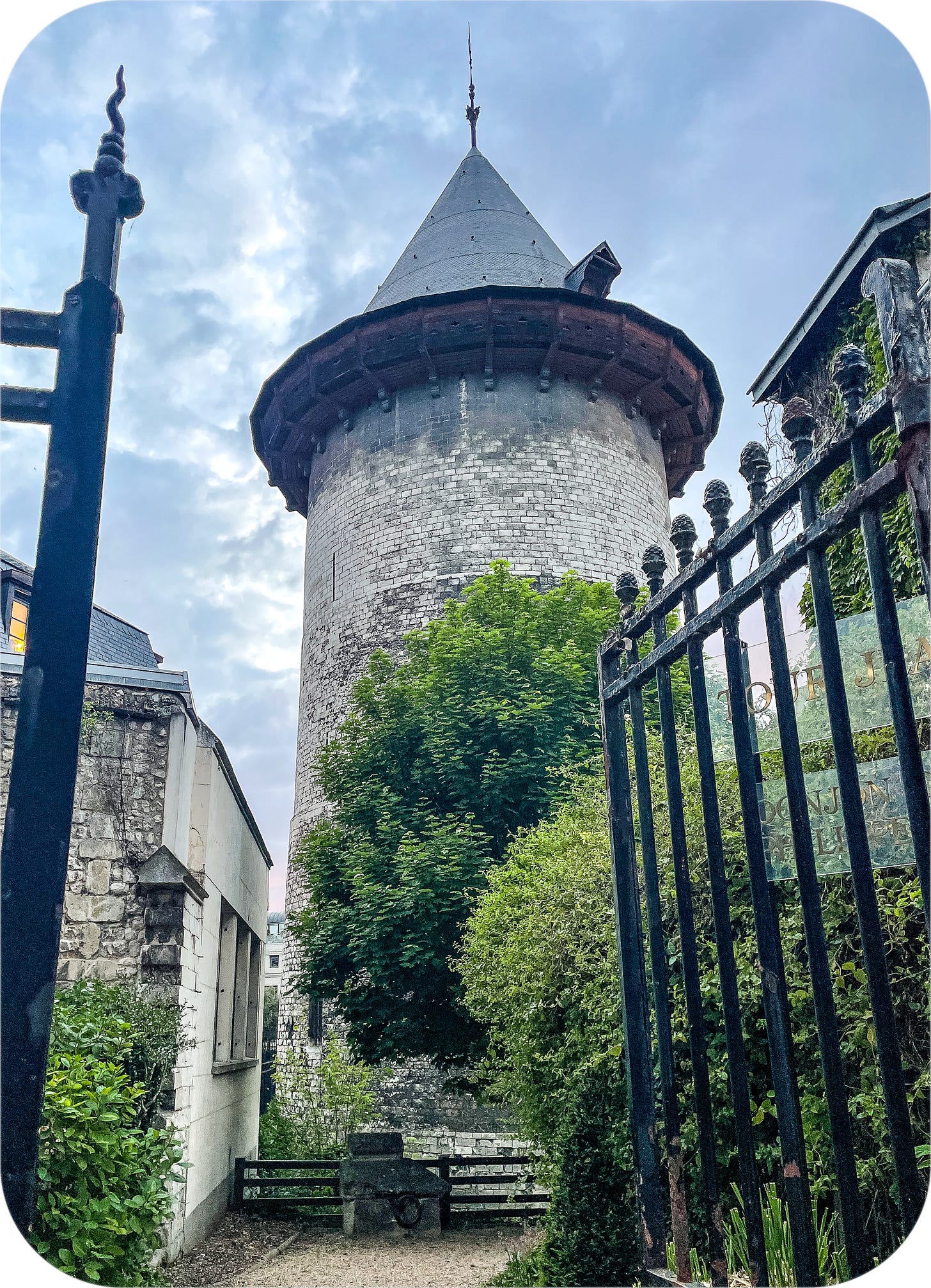

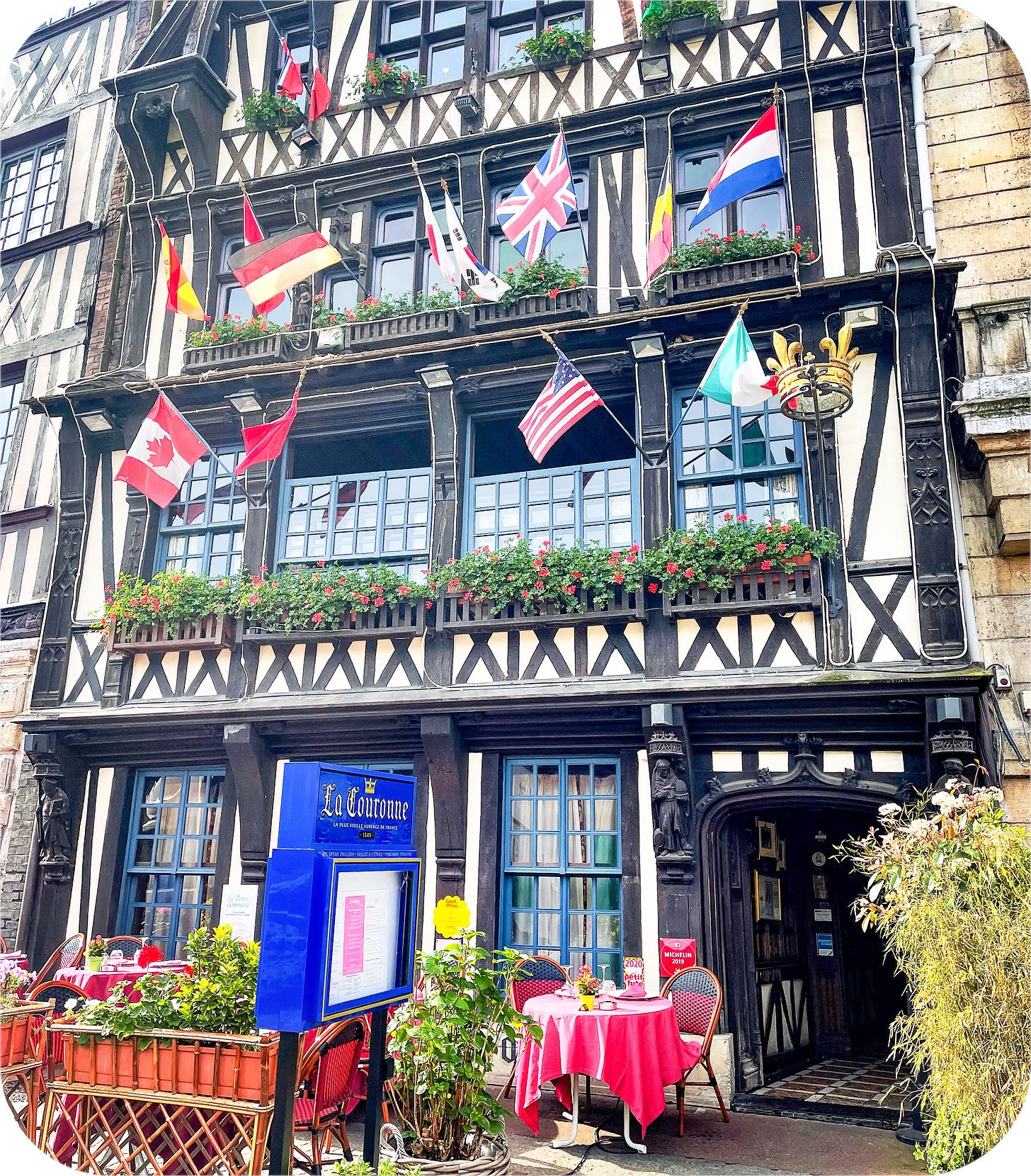

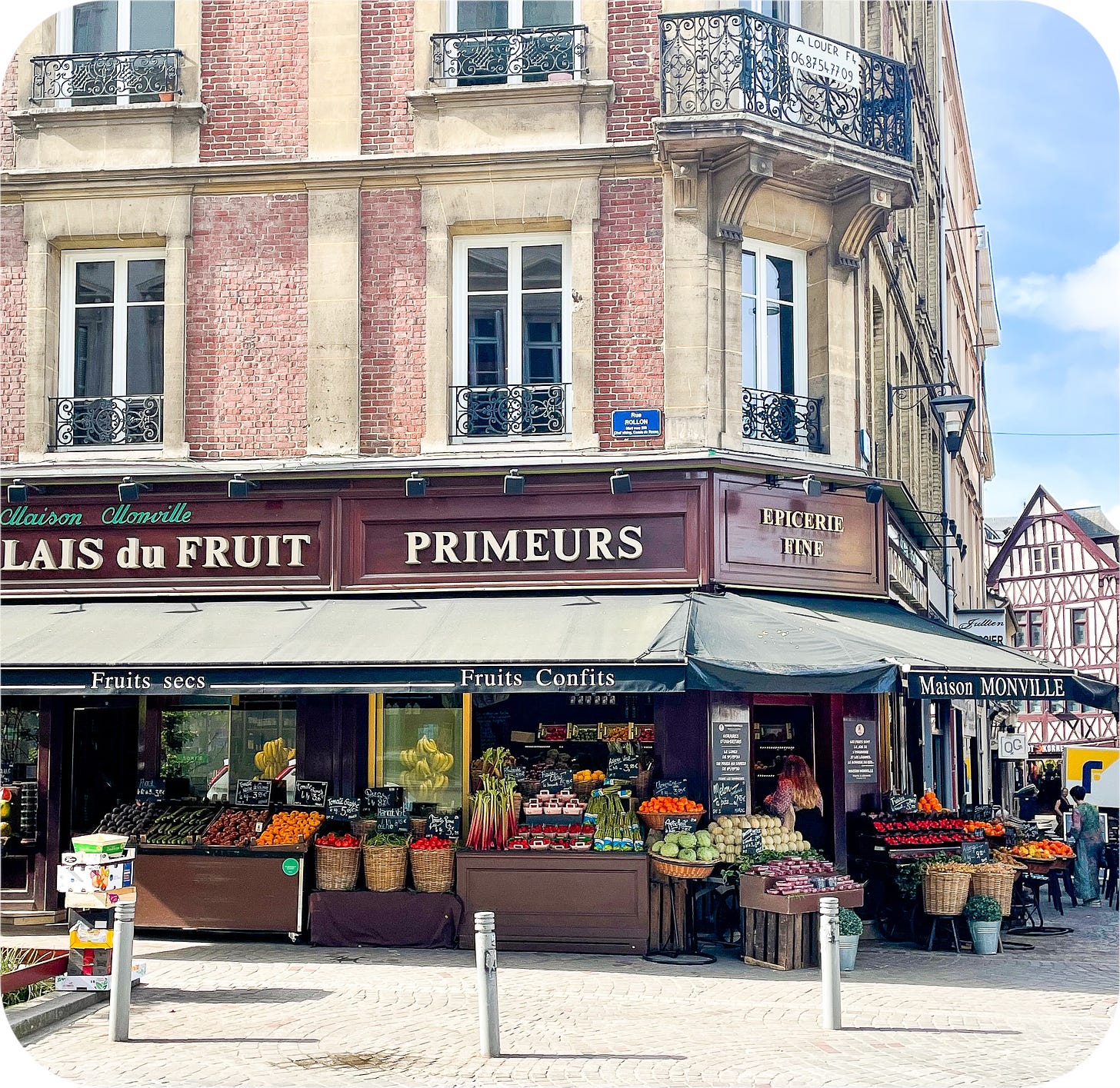


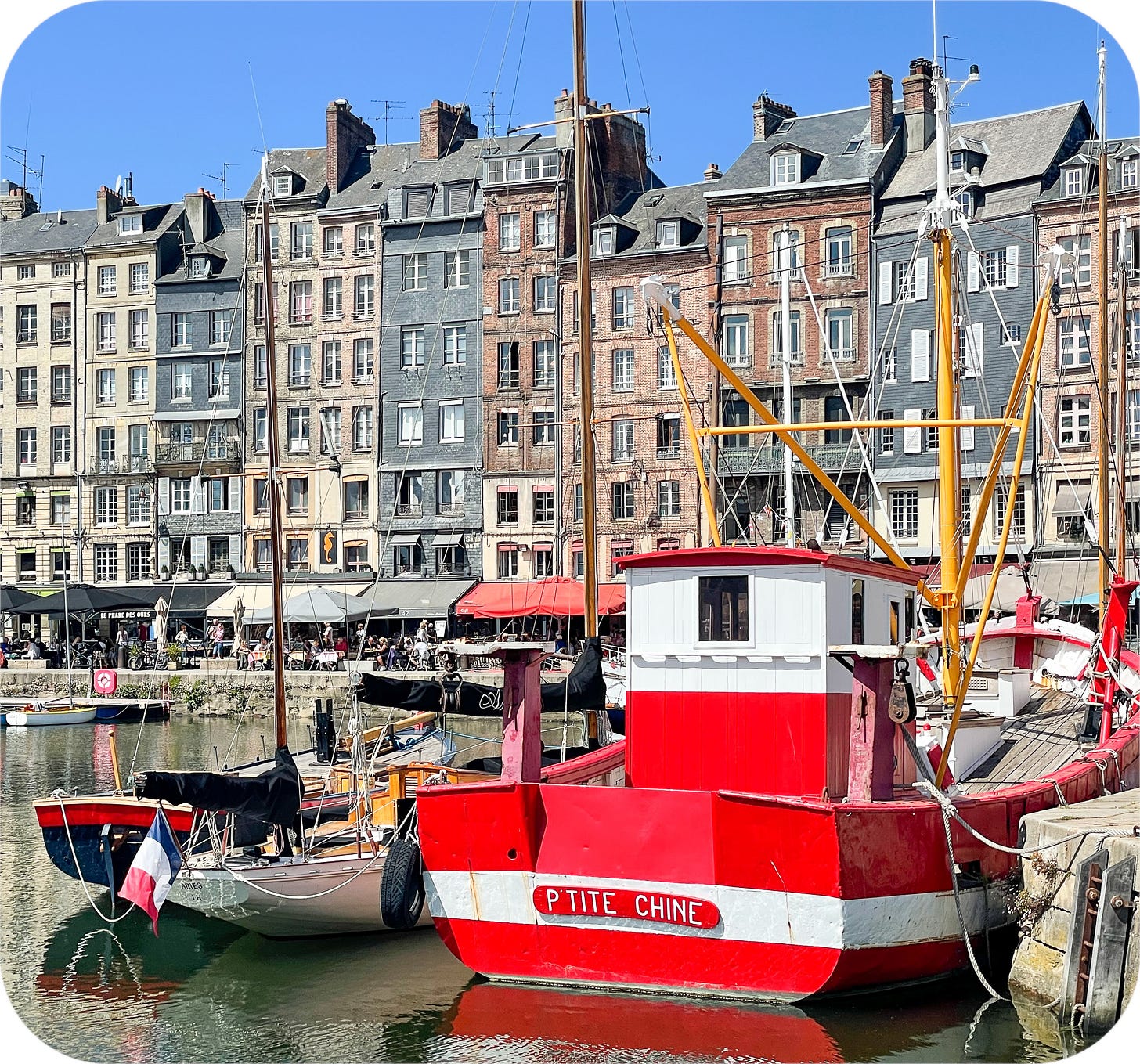
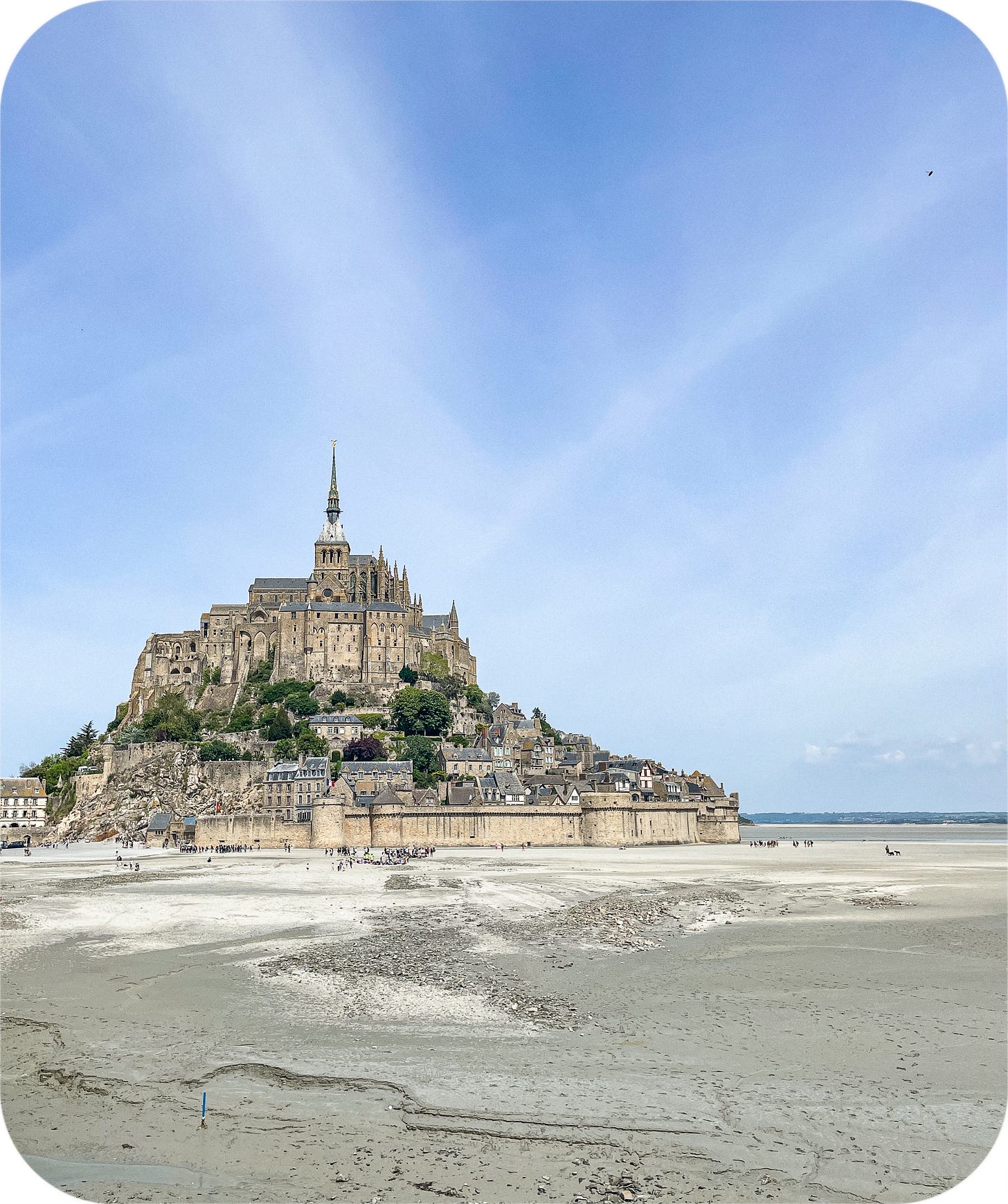
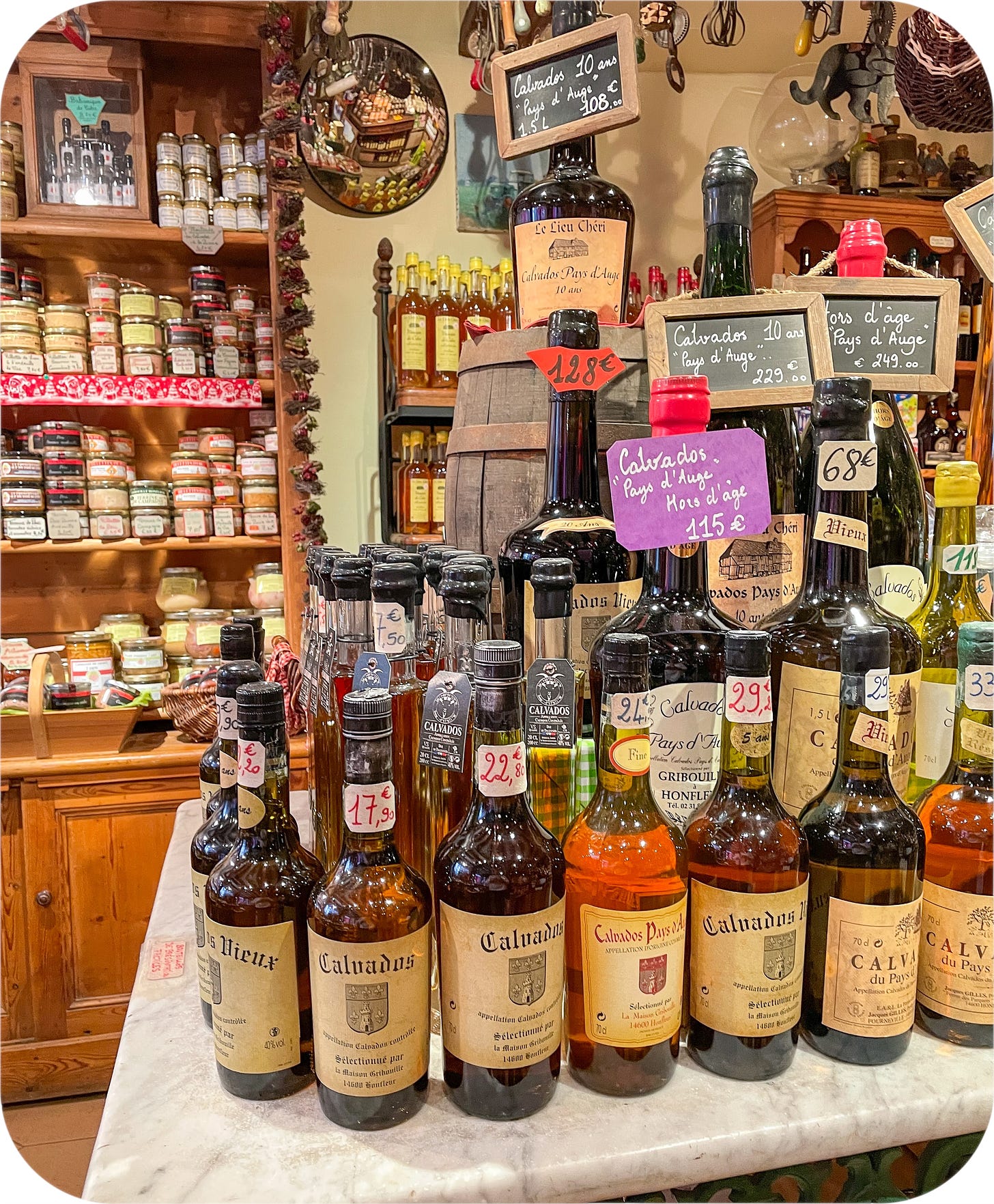

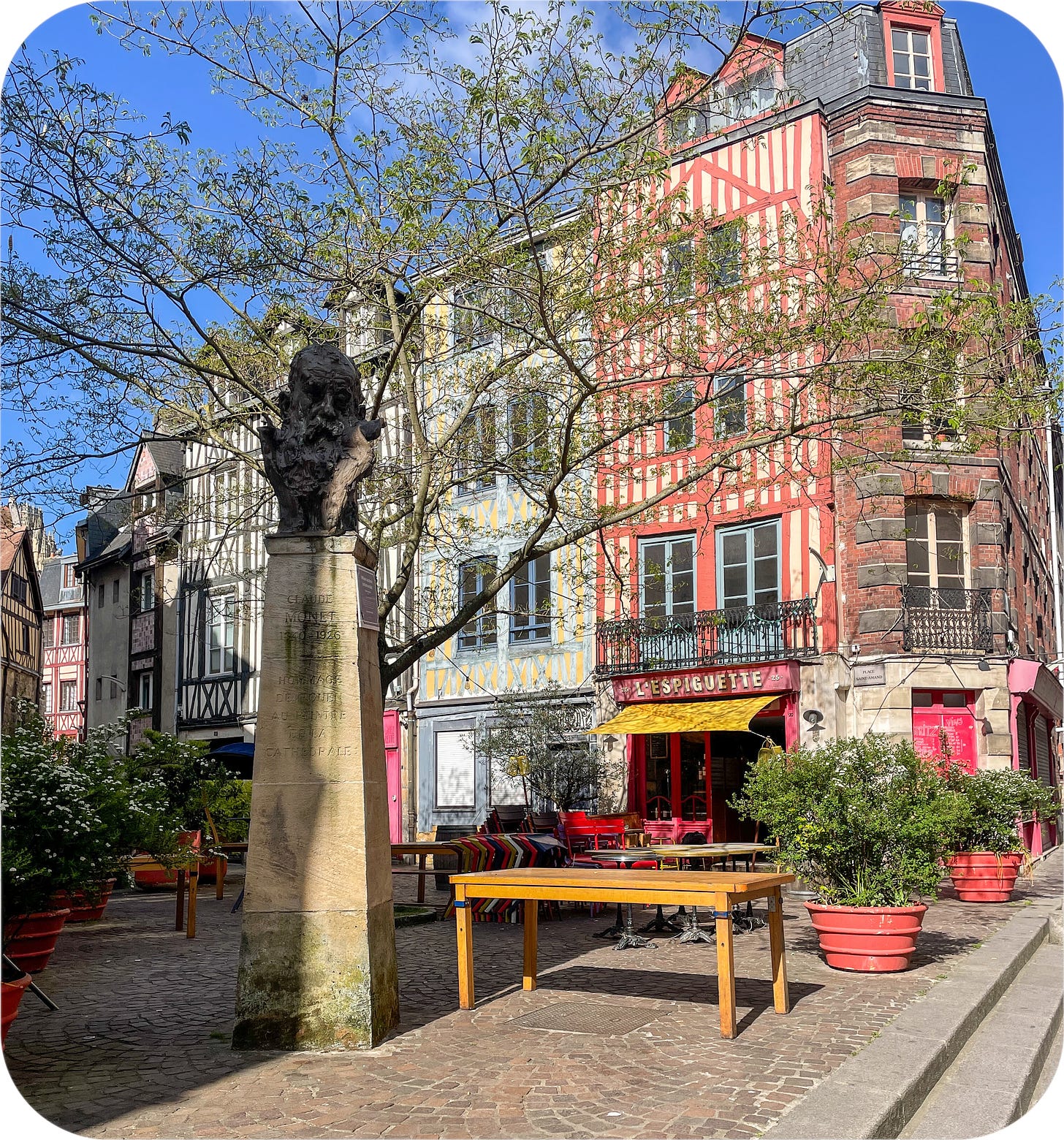
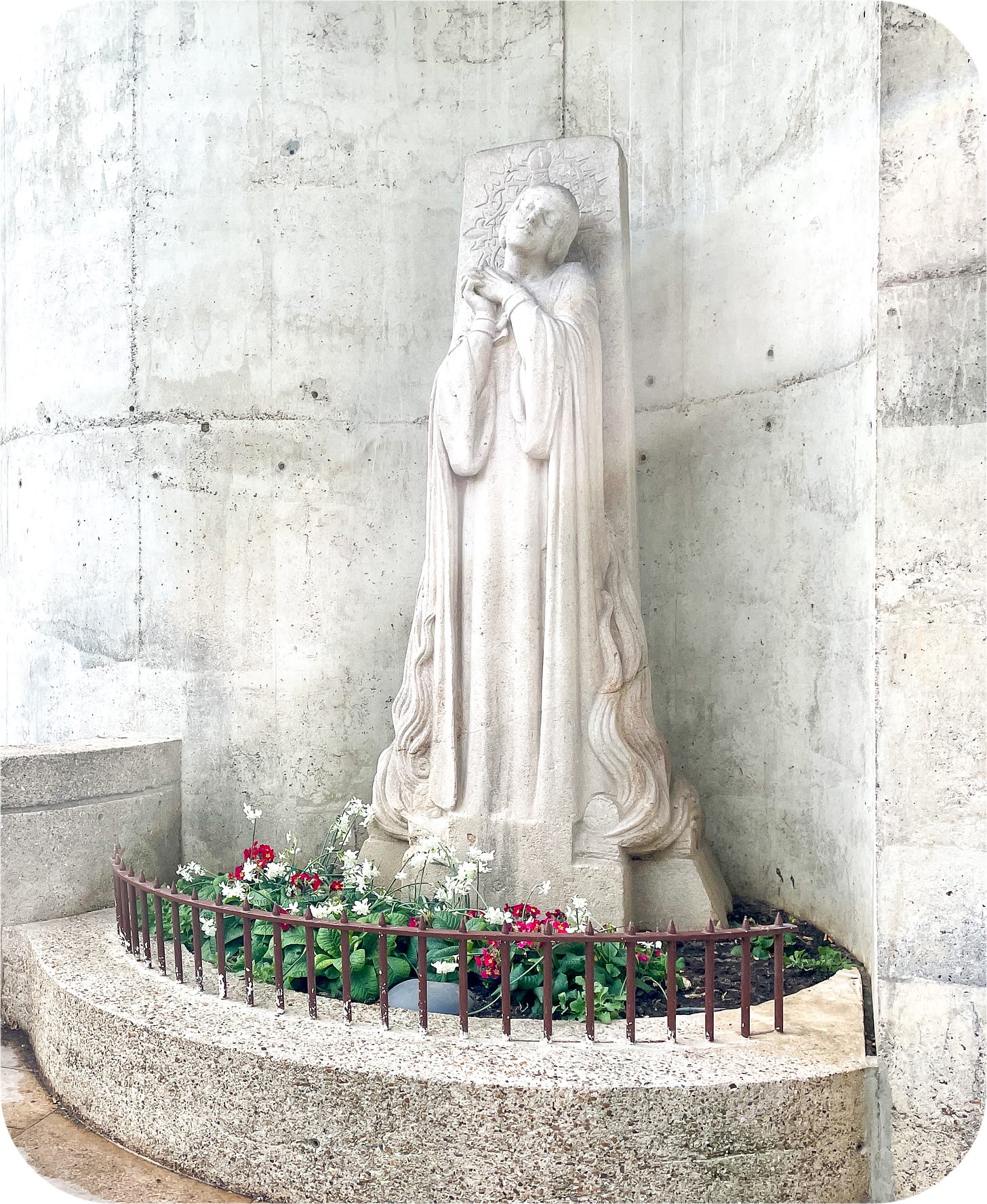


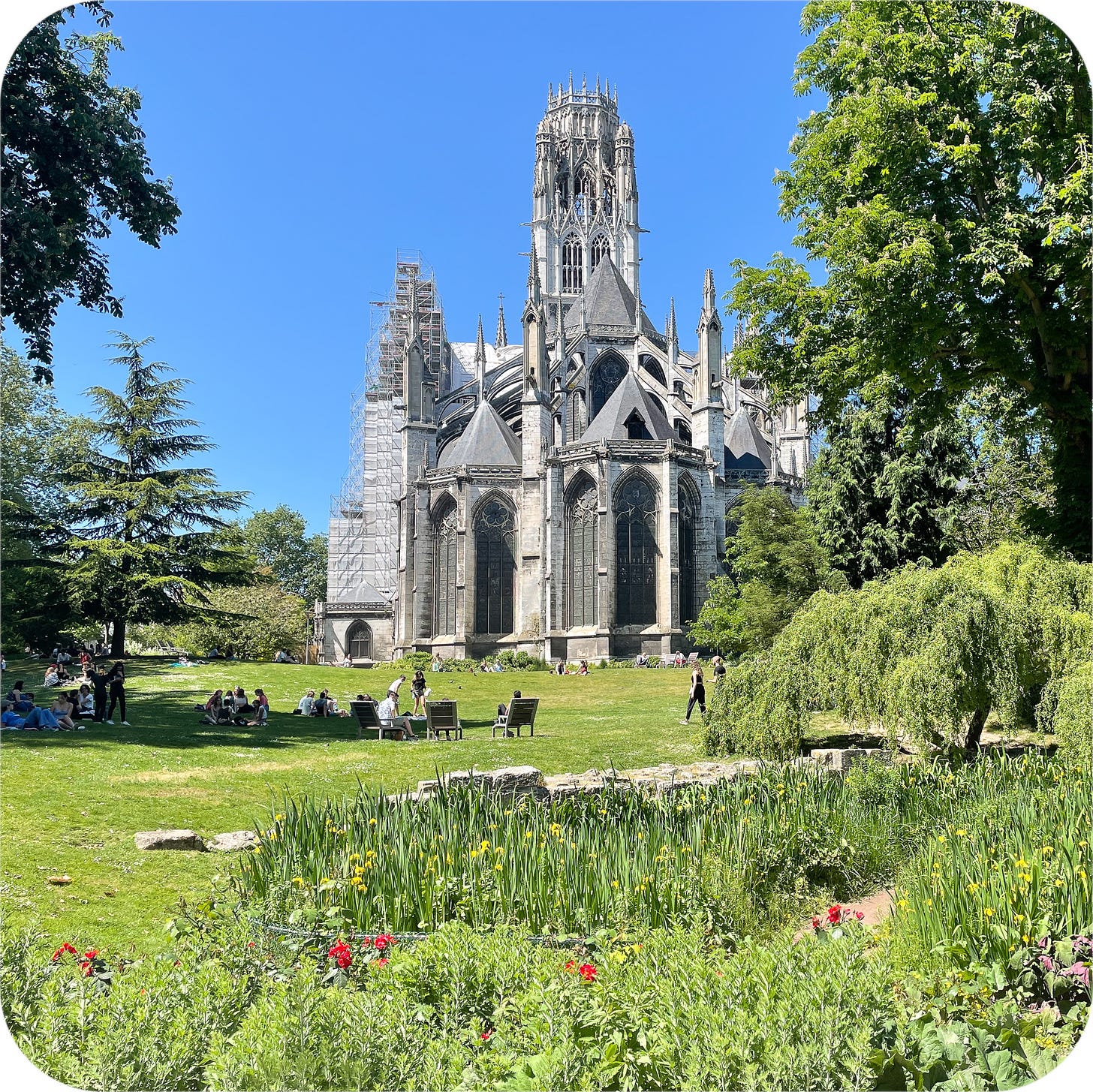

What a delight to find your post on Rouen and Honfleur. I’m not sure why but we didn’t see half of what you saw in Rouen, possibly due to the fact that we had a time restraint with having travelled by train. We did see the tower where St Joan of Arc was kept, the church, the clock and the Cathedral, and of course those black and white buildings, but so many of the shops and restaurants were closed. The story of our life when travelling. I particularly wanted to see the clock and the cathedral as I have pen and ink sketches of them which my Great Aunt purchased when she was nursing in Rouen, during the First World War. We just loved Honfleur, but that visit was when we had docked at Le Halve and did a day trip.
I love Rouen.